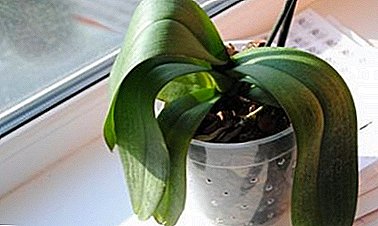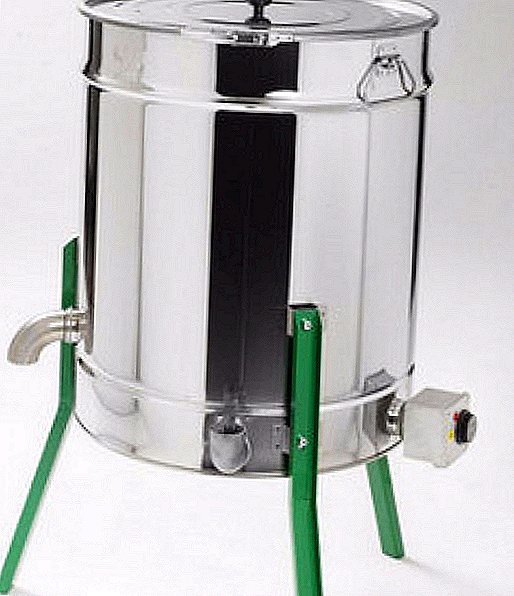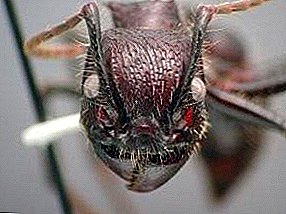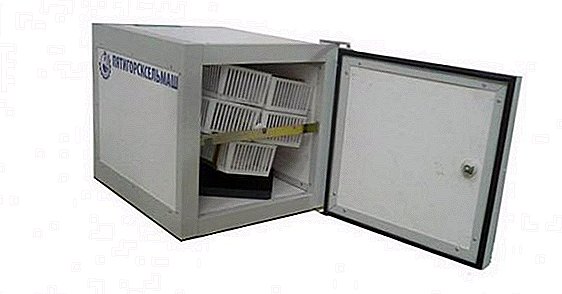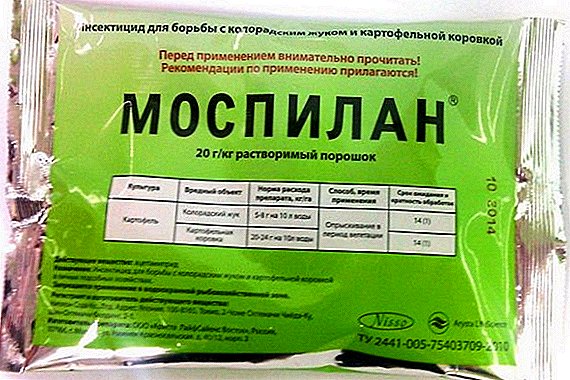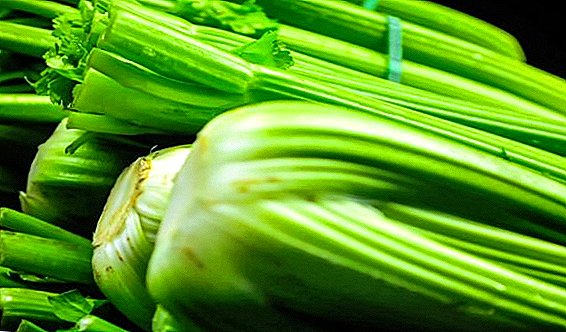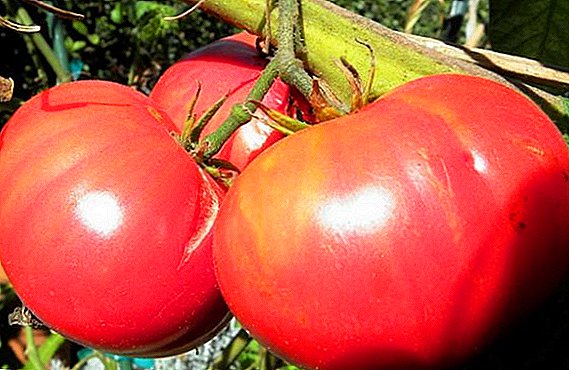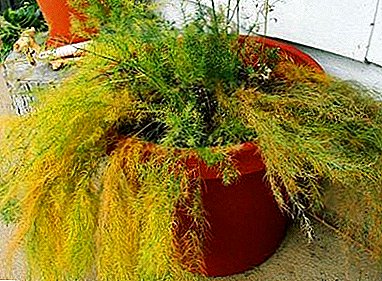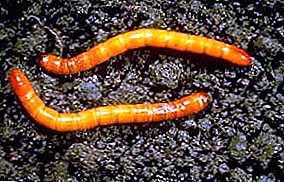
Wireworm called larvae click beetles. This name they owe to their appearance, as similar to small pieces of wire and the same durable.
From the end of April, the emergence of beetles on the surface of the earth begins and the females lay their eggs in warm, humid places. Two weeks later, larvae appear. Their growth and development to the state of an adult beetle lasts 4 years.
Acidic and wet soils, especially those infected with wheat grass, are the most favorite habitats of the wireworm. The larvae cause the greatest damage to root crops, especially potato tubers.
Treating fruit trees from pests is the first case of a summer resident in spring.
Features of growing tomatoes in the open field, read here.
Care for the pumpkin at the dacha: //rusfermer.net/ogorod/plodovye-ovoshhi/vyrashhivanie-v-otkrytom-grunte/tehnologiya-vyrashhivaniya-i-uhod-za-tykvoj.html
Wire Fighting Means
 You need to start with tillage. For a successful fight with the wireworm, it is necessary to carry out autumn, deep enough (up to 25 cm) digging of the earth.
You need to start with tillage. For a successful fight with the wireworm, it is necessary to carry out autumn, deep enough (up to 25 cm) digging of the earth.
Very good results are obtained by such digging, with the introduction of wood ash, in the deep autumn before the onset of frosts.
In the spring should be an additional smaller digging. During these works it is necessary to clean the removable soil from larvae, pupae and beetles.
Reducing the acidity of the soil can be achieved by applying lime, chalk, crushed eggshell, ammonia mineral fertilizers.
Constant weed control, especially with wheatgrass and planting legumes: peas, beans, beans, will help you in the fight against wireworms.
Wire bait bait
Lures are another effective means to eradicate this pest. Harvest bait need a few days before planting potatoes.
 Sow wheat, maize or oat seeds by nests, and when they germinate, dig them together with the larvae. Such baits can be made from pieces of raw potatoes, beets or carrots, which are placed on sticks 25 cm long.
Sow wheat, maize or oat seeds by nests, and when they germinate, dig them together with the larvae. Such baits can be made from pieces of raw potatoes, beets or carrots, which are placed on sticks 25 cm long.
They are buried so that the ends of the sticks remain on the surface, and every 2-3 days they are taken out to collect all the larvae. This method can be used throughout the summer.
To combat adult beetles, you can use a different method. At the bottom of a half-liter jar, place the bait and bury it in a shady place to the neck. For every weave you need 10 such cans. Every 3 days you need to collect beetles and change the bait.
Another simple, but rather effective method is the layout into small depressions of rotted material. This is best done on those plots of land where you assume the largest accumulation of larvae: such a wet shelter will attract many beetles. After a few days you need to collect and burn everything.
In general, working with baits requires care, but the effectiveness of this method is obvious.
Growing cucumbers at home will bring to any summer resident the joy of the process itself and the benefits of the harvest.
Growing eggplant in the open field: //rusfermer.net/ogorod/plodovye-ovoshhi/vyrashhivanie-v-otkrytom-grunte/vyrashhivanie-uhod-za-rassadoj-vysadka-v-otkrytyj-grunt-baklazhanov.html
How to protect the planting of potatoes from the wireworm
Most of the wireworm larvae live in those areas where the roots are thickly intertwined, therefore, one should not plant potatoes next to lawns sown with perennial grasses or near the uncultivated part of the site.
During planting potatoes, prepared wells should be watered with a solution of potassium permanganate at the rate of 5 g of powder per 10 liters of water. For every 20 holes you need 10 liters of solution. This is a fairly effective way if the contamination of the soil with pests is not very large. In this case, planting leaf lettuce between potato rows also helps to get rid of the wireworm. The larvae, feeding on its roots, will not touch the potatoes.
If the degree of contamination of the soil is high, in this case, nitrogen-containing fertilizers will come to the rescue: ammonium sulfate, ammonium chloride, ammonium nitrate.
Potatoes seeds, before planting, can be treated with solutions "Aktara" and "Prestige" in accordance with the instructions.
Wirewound Chemicals
If the described methods of struggle do not lead to the desired result, you will have to use special chemicals. These include: effective, but highly toxic "Basudin", as well as "Diazinon", "Thunderbolt-2", "Medvedox-U", "Calypso". These funds should be used in accordance with the instructions.
Good results are obtained by the layout of the granules of the drug "Provotox" in each well next to the tubers. "Provotoks" is gradually distributed in the soil and reliably protects the plants, providing a lasting effect.
 To the newest drugs to combat wireworm is "Nemabakt." The drug is obtained as a result of the symbiosis of a predatory nematode (a kind of roundworm) and bacteria. The nematode, penetrating into the wireworm, releases a bacterium that destroys its insides, and the nematode, in turn, eats them.
To the newest drugs to combat wireworm is "Nemabakt." The drug is obtained as a result of the symbiosis of a predatory nematode (a kind of roundworm) and bacteria. The nematode, penetrating into the wireworm, releases a bacterium that destroys its insides, and the nematode, in turn, eats them.
In this case, the nematode does not harm the earthworms and other useful soil inhabitants. It is not dangerous for humans and animals. “Nemabakt” will be your faithful assistant in the fight wireworm. In addition, the “Protection” soil was developed, which is already populated by nematodes.
Weeds that contribute to the spread of pests can be controlled with a selective herbicide for Lazurite potatoes. Destroying weeds, it does not harm the culture itself. "Lazurite" removes weeds at the germination stage. It is effective against even such difficult-to-remove weeds as ambrosia, quinoa, mari, dandelion, chaff, colza, and star sprocket.
Homemade carrots contain many vitamins. Read on the website how to grow carrots.
Radish, planting and care on it: //rusfermer.net/ogorod/korneplodnye-ovoshhi/vyrashhivanie-v-otkrytom-grunte-korneplodnye-ovoshhi/sovety-ogorodnikam-po-vyrashhivaniyu-redisa-v-domashihrhо -rkhоmоrkhоmоhоmоhоmоhmоrkırıkırıııvviy
Damage to the garden from the wireworm
 Potatoes more than other crops suffer from wireworm larvae. They damage germinating seeds, roots and root crops themselves.
Potatoes more than other crops suffer from wireworm larvae. They damage germinating seeds, roots and root crops themselves.
The wounds inflicted on young tubers by small larvae are drawn in and look like funnels on already adult tubers.
Older larvae cause much more damage, they can gnaw through a potato tuber through. Pathogens of fungal and bacterial diseases can penetrate through the damaged surface. This may cause the tuber to rot during storage.
Thus, in the fight against the wireworm, effective agrotechnical measures for tillage, the use of baits, and special preparations render effective assistance. In the dry season, care should be taken to preserve moisture in the soil.
And also don't rush to get rid of toads on their plot, they, like ground beetles, love to feed on the wireworm larvae and will provide you with invaluable help in the fight against this pest.


 Treating fruit trees from pests is the first case of a summer resident in spring.
Treating fruit trees from pests is the first case of a summer resident in spring. Growing cucumbers at home will bring to any summer resident the joy of the process itself and the benefits of the harvest.
Growing cucumbers at home will bring to any summer resident the joy of the process itself and the benefits of the harvest. Homemade carrots contain many vitamins. Read on the website how to grow carrots.
Homemade carrots contain many vitamins. Read on the website how to grow carrots.